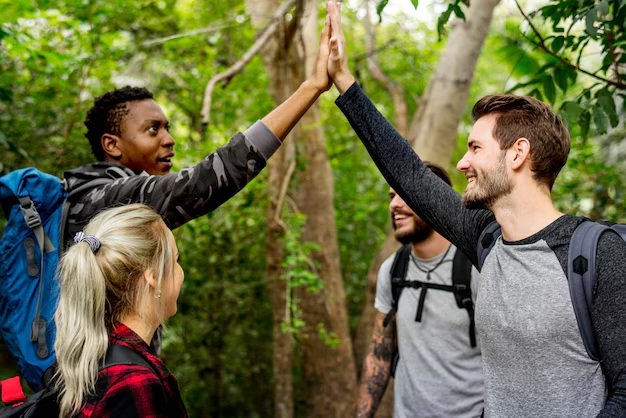12 Conservation Technologies Driving Wildlife and Environmental Protection
Wildlife and nature conservation are no longer reliant solely on boots-on-the-ground patrols or static observation. In this era of ecological crisis, conservationists are increasingly turning to cutting-edge technologies to protect endangered species, monitor fragile ecosystems, and restore biodiversity. From AI-powered drones to DNA sampling from elephant dung, here are 12 game-changing conservation technologies transforming the way we safeguard the planet.

In This Article
- 1. Drones + AI for Poaching Prevention and Habitat Monitoring
- 2. GPS Telemetry for Behavioural Insight
- 3. Wildlife Drones for Radio‑Telemetry
- 4. PAWS (Protection Assistant for Wildlife Security)
- 5. Acoustic Monitoring & AI Animal Call Detection
- 6. eDNA for Species Monitoring
- 7. Satellite‑Based Tracking via ICARUS
- 8. Biologging: Animal‑Carried Accelerometers & Sensors
- 9. ConservationBots: Autonomous Bio‑Tracking Drones
- 10. AI‑Enhanced Camera Traps (YOLO, CNNs)
- 11. “Poo‑Zoo”: Faecal Cells for Genetic Rescue
- 12. Cloning & Lab-Based Genetic Rescue
- Interactive Stats Table (Sample Data)
- Actionable Advice from These Innovations
1. Drones + AI for Poaching Prevention and Habitat Monitoring
Imagine flying drones equipped with thermal and visual cameras that detect poachers under the cover of darkness—that’s exactly what Smart Parks is doing today. They deploy these drones across parks like Kruger, Serengeti, and Malawi’s Liwonde, complemented by LoRaWAN sensor networks that monitor wildlife and fences in real time. These systems allow rangers to detect poachers at night, before they strike.
Laurens de Groot, co‑founder of Smart Parks, shared that drones intercepted armed intruders ahead of dawn patrols, leading to a dramatic drop in rhino poaching. In Kruger alone, rangers spotted 55 intruders in just one month via drone surveillance. According to a World Bank–affiliated report, areas using this tech saw poaching incidents drop to nearly zero within two years.
By blending AI directly onto drones, these systems analyse live footage to flag suspicious human activity, alerting rangers instantly. This integration boosts detection rates by around 30%, reshaping anti-poaching patrols from reactive to proactive operations.
2. GPS Telemetry for Behavioural Insight
In Virginia, researchers from the Smithsonian’s Turtle Conservation Ecology Lab and the Clifton Institute tagged wild box turtles—nicknamed “Roxy” and “Tyrion”—with GPS backpacks. These tiny trackers, weighing only a few grams, revealed that the turtles often wandered into nearby farm fields—areas frequently mowed by farmers. The turtles were found staking out clearings, putting them at serious risk during mowing season. These insights led to a simple yet impactful policy change.
Joe Kolowski, science director at the Clifton Institute and one of the key researchers behind the data, now advises farmers: “Delay haying by even a week, and you could save hundreds of tiny turtles every year.” Imagine that—just one small scheduling shift, guided by precise tracking data, making a huge difference in survival rates.
3. Wildlife Drones for Radio‑Telemetry
Tracking elusive, endangered species across rugged terrain used to be a weeks-long grind. Under the leadership of Dr Debbie Saunders, Australia’s Wildlife Drones revolutionised this by equipping drones with radio-receiver payloads. These receivers pick up signals from VHF-tagged animals—like pangolins, swift parrots, and koalas—from the air.
In Vietnam, drones found rehabilitated pangolins within hours—a task previously taking foot teams days. Research shows drone tracking can cover up to 11 times the area of ground teams, depending on terrain. This speed means rangers can react more quickly to threats like illegal wildlife trade, and biologists gain richer data about movement and habitat use.
Dr Saunders explains that this method can monitor dozens of individuals at once, completely transforming wildlife research and emergency response across continents.
4. PAWS (Protection Assistant for Wildlife Security)
PAWS is an AI platform designed to guide rangers on patrols more strategically. Developed by USC and partners, it analyses past poaching incidents and terrain to create risk maps and suggest patrol routes. Field trials in Uganda’s Murchison Falls and Cambodia’s Srepok Sanctuary showed snare detections jumped by about 30% after adopting PAWS-driven patrols.
One Malaysian forest ranger said PAWS “felt like a sixth ranger” by directing patrols along high-risk paths they might otherwise have missed. It has since been integrated with SMART software and spread to hundreds of parks worldwide.
By blending AI-based prediction with real-world ranger expertise, PAWS helps conservation teams make every step count.
5. Acoustic Monitoring & AI Animal Call Detection
Imagine placing hundreds of tiny listening posts across a rainforest to “hear” wildlife. In Costa Rica’s Osa Peninsula, for example, scientists deployed around 350 audio sensors combined with a solar‑powered AI recorder nicknamed “Sparrow.” These tools automatically detect spider‑monkey calls, mapping their activity over time. According to AP News, this method revealed that monkeys avoid paved roads and plantations, meaning existing forest corridors aren’t serving their needs.
Conservation teams have used these findings to recalibrate corridor designs, ensuring they align with real animal movements. Rather than relying on habitat theory alone, on‑the‑ground evidence now guides planning, meaning more effective protection for creatures like the spider monkey.
6. eDNA for Species Monitoring
Environmental DNA (eDNA) is a game‑changer for tracking wildlife in a non‑invasive way. Just by sampling water, snow, or soil, researchers can identify species without ever seeing them.
Take the case of the Canada lynx. Scientists collected snow‑track samples and confirmed the lynx’s presence using eDNA techniques, without needing to trap or disturb them. One study successfully retrieved nuclear DNA from 59% of lynx tracks, and even more from polar bears. Another project genotyped individual bears and lynx via snow‑track eDNA, showing how this method can support long‑term mark‑recapture efforts.
Because it’s cost‑effective and safe for wildlife, eDNA allows researchers to cover large areas quickly, making biodiversity surveys more efficient. Conservation managers now use such data to track rare or elusive species like lynx, wolverine, and even fishers in winter landscapes.
7. Satellite‑Based Tracking via ICARUS
ICARUS (International Cooperation for Animal Research Using Space) turned the ISS into a wildlife tracking station in 2020. It uses ultra‑light tags—about 5 g—to follow small animals like birds and bats. Tags transmit position data to receivers installed on the International Space Station, providing real‑time movement insights.
The data from ICARUS has been directly used to protect wildlife. In Europe, hedgerow preservation zones have been designed based on small‑bird flight corridors revealed by this tracking. Farmers and policymakers are now incorporating these paths into land‑use plans to support biodiversity.
Further, the ICARUS project is expanding: in 2025, receivers will launch on CubeSats, allowing global coverage independent of the ISS. By democratizing access to animal movement data, ICARUS strengthens both conservation planning and public engagement.
8. Biologging: Animal‑Carried Accelerometers & Sensors
Biologging involves attaching sensors—like accelerometers, heart‑rate monitors, and GPS tags—to animals. These devices record behaviour and physiology, unlocking insights into how animals live and respond to changing environments.
One compelling application comes from studies on marine turtles. Free‑ranging loggerhead turtles equipped with heart‑rate loggers revealed dramatic changes in heart rhythm when diving. For instance, deeper dives could trigger heart rates as low as two beats per minute—a phenomenon known as diving bradycardia.
By measuring the turtles’ dive depth and heart function, researchers identified critical foraging zones and stress triggers. These insights led coastal development projects to implement buffer zones and modify boat routes, reducing disturbances and safeguarding turtle habitats.
Another recent biologging study in the Gulf of Mexico used cameras, pressure sensors, and tri‑axial accelerometers to track loggerhead turtle behaviours after capture and release. The detailed dive and movement data helped refine handling protocols and release timing, improving turtle post‑capture survival.
9. ConservationBots: Autonomous Bio‑Tracking Drones
Imagine small drones that can locate and follow radio‑tagged animals without any human help. That’s exactly what the research team working on ConservationBots achieved. These drones carry lightweight sensors and use smart algorithms to autonomously track wildlife, even in tough environments. According to a 2023 arXiv paper, these drones tracked wombats in Australia, matching or even surpassing the accuracy of seasoned biologists using handheld gear.
By flying into rugged territories and logging data continuously, these drones make wildlife monitoring smoother and safer, for both animals and people. No more missing days of activity or risking dangerous terrain. Wildlife scientists say this tech makes their jobs easier and more effective.
10. AI‑Enhanced Camera Traps (YOLO, CNNs)
Camera traps have long been a go-to tool for wildlife monitoring, but technology has given them a major upgrade. A 2024 study—performed across 11 curlew nesting sites in Wales—used YOLOv10, a cutting-edge object-detection AI model, embedded directly into 3/4G-equipped cameras. This system spotted adult curlews and chicks in real time, boasting an impressive 95% F1‑score. That’s not just lab talk—field teams reported AI alerts catching outbreaks of fox predation before they escalated, giving a critical head start for intervention.
With sensitivity over 90% and specificity at 100%, the tech means almost no false positives, only actionable insights. Essentially, it turns remote camera traps into sentient guards, recognising threats the moment they happen and alerting conservationists to act swiftly. Over time, this AI integration drastically reduces manual image checking and accelerates conservation responses.
11. “Poo‑Zoo”: Faecal Cells for Genetic Rescue
Imagine saving endangered animals with a simple scoop of dung. That’s what Oxford University, in partnership with Chester Zoo and Revive & Restore, is exploring with their “Poo‑Zoo” project. The technique involves collecting fresh faeces (from elephants, giraffes, mice—you name it), then isolating live intestinal cells. These cells can be cultured, banked, and, theoretically, used to generate sperm or eggs through lab-based reproductive technology (like IVF or even cloning).
The beauty of it lies in its non-invasive, cost-effective approach, able to sample wild, elusive creatures without ever disturbing them. Prof. Suzannah Williams from Oxford shared her excitement: “It’s feeling very, very positive… we even isolated cells from elephant dung.” While still in its early stages—and facing challenges like bacterial contamination and managing large volumes of dung—it’s being hailed as a new frontier in genetic rescue.
By offering a non-invasive way to harvest genetic diversity, this method could complement traditional habitat protection, giving populations a stronger genetic leg-up against disease or environmental change.
12. Cloning & Lab-Based Genetic Rescue
Sometimes extinction isn’t the end. Through lab-based cloning, science is offering a second chance to species on the brink. Since 2020, the non-profit Revive & Restore has helped produce cloned individuals from cryogenically preserved tissues—most notably a black‑footed ferret named Elizabeth Ann, and Przewalski’s horses cloned in both 2020 and 2023.
Elizabeth Ann holds the distinction of being the first endangered species ever cloned in the United States, symbolizing a major leap in genetic rescue capabilities. By reactivating preserved DNA, scientists are reconstructing lost genetic lines—a powerful tool in the fight against low diversity and inbreeding in tiny, fragmented populations. Still, the technique is complex, costly, and far from a magic bullet. Ethical considerations loom large: who decides which species to clone, and how do we ensure their long-term survival in the wild? Yet, as proof of concept, these successes are historic.
Interactive Stats Table (Sample Data)
| Tech | Species/Area | Outcome |
|---|---|---|
| Drones + AI for Poaching | Kruger, Serengeti, Liwonde | Rhino poaching has reduced to near zero in 2 years |
| GPS Telemetry | Box Turtles (Virginia) | Mowing schedules changed to save 100s of turtles |
| Wildlife Drones (Radio) | Pangolins, Parrots (Vietnam) | Found pangolins in hours vs. days on foot |
| PAWS AI Patrol Mapping | Murchison Falls, Cambodia | 30% increase in snare detection |
| Acoustic Monitoring + AI | Spider Monkeys (Costa Rica) | Mapped monkey avoidance of corridors |
| eDNA Species Detection | Lynx, Bears (Canada, USA) | Species tracked from snow, soil, water DNA |
| Satellite Tracking (ICARUS) | Birds, Bats (Global) | Informed hedgerow protections, expansion to CubeSats |
| Biologging Sensors | Marine Turtles (Gulf of Mexico) | Identified stress & refined post-release care |
| ConservationBots | Wombats (Australia) | Tracked in rugged terrain, matched expert accuracy |
| AI-Enhanced Camera Traps | Curlews (Wales) | 95% detection of curlew chicks, early fox alerts |
| “Poo-Zoo” Genetic Rescue | Elephants, Mice (Oxford Zoo) | Live cells isolated for future reproduction |
| Cloning & Lab Genetic Rescue | Ferrets, Horses (USA) | First endangered species cloned in the US |
Learn More: AI in Wildlife Conservation
Actionable Advice from These Innovations
Adopt hybrid tech models. Use drones equipped with GPS and AI to monitor wildlife and detect threats in real time. In Botswana, researchers combined drone flights with AI to successfully monitor rhinos and spot poachers more efficiently and accurately than patrol teams alone.
Engage rangers early. Involving on‑the‑ground staff from the start boosts trust and effectiveness. Tools like the Platform for Anti‑Wildlife Smuggling (PAWS) thrive when rangers help design and implement systems.
Use citizen science. eDNA kits and smartphone apps empower everyday people to collect valuable data. Mediterranean monk seal conservation recently saw volunteers using eDNA to track this elusive species. Global biodiversity efforts also benefited from community-collected water samples in a recent worldwide eDNA survey.
Prioritise non‑invasive methods. Acoustic recorders, camera traps, and water‑based eDNA reduce human disturbance and deliver robust data—approaches now central to marine and terrestrial studies.
Plan for scale. If techniques like assisted reproduction or cloning are feasible, start biobanking now. Preserving genetic material ahead of time is essential for future species rescue.
Influence policy with data. Concrete tracking data—such as turtle migrations or bird counts—helps shape real laws and protection measures. AI-analysed aerial and acoustic monitoring tools already inform policy decisions, proving that data truly drives change.







